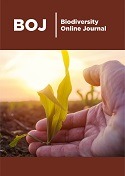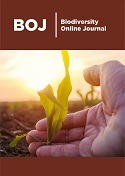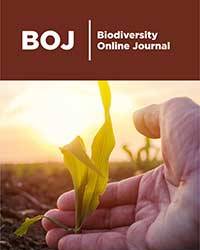Text
Organic Light Emitting Diode (OLED) Technology and its Applications: Literature Review
Abstract
Go to
An Organic Light Emitting Diode (OLED) was one of the growing leading semiconductor device technologies. This technology has several advantages over other technology such as eco-friendly lighting sources with superior color quality, wide viewing angle, mercury-free manufacture, fascinating flexibility etc. In an OLED a conducting an emissive layer was sandwiched between two electrodes to emits light in response to an electrical current. A various device structure, materials as well as deposition techniques have been investigated to achieve the better and improved performance of OLED. In this review we summarized the device architectures, materials and advantage and disadvantages of Organic Light Emitting Diode (OLED) has been discussed.
Keywords: Organic light emitting diode; Display; Liquid crystal display and organic LED; Hole transport layer; Hole block layer; Electron transport layer
Read more about this article : https://crimsonpublishers.com/boj/fulltext/BOJ.000527.php
Read more Crimson Publishers Google Scholar Articles https://scholar.google.com/citations?view_op=view_citation&hl=en&user=j4dqTN0AAAAJ&citation_for_view=j4dqTN0AAAAJ:b1wdh0AR-JQC
#Crimson Publishers Google scholar#International Journal of Biodiversity#Journal of Biodiversity Management#Journal of Biodiversity
0 notes
Text
Pollinator Diversity and Abundance in a Pea Crop (Pisum Sativa L.) from Valladolid (Spain)
Abstract
The present work assesses the diversity of pollinators in a pea (Pisum sativum L) crop from La Overuela (Valladolid, Spain). It is based on samplings carried out in 2008 that combined visual observations and the use of sweeping nets. The field work identified a total of 317 individuals, belonging to 25 genera and 42 species. The most abundant species discovered are Eucera codinai Dusmet and Alonso, 1926 with 46.68% and Xylocopa violacea (L. 1758) with 19.87% of abundance. Moreover, the phenological analysis clearly confirms there is a relationship between plant growth stages and the presence of pollinators in a crop commonly considered to be self-pollinating. This demonstrates the important role that pollinators play in pea cross-pollination.
Keywords: Pollinators; Natural enemies; Bees; Wild bees; Pea; Pisum sativum; Agriculture; Spain
Read more about this article : https://crimsonpublishers.com/boj/fulltext/BOJ.000529.php
Read more Crimson Publishers Google Scholar Articles :https://scholar.google.com/citations?view_op=view_citation&hl=en&user=j4dqTN0AAAAJ&citation_for_view=j4dqTN0AAAAJ:ILKRHgRFtOwC
#Crimson Publishers Google scholar#Journal of Biodiversity Management#Journal of Biodiversity#International Journal of Biodiversity
0 notes
Text
Socio-Zoological Value and Conservation Perception of Hippopotamus amphibius at the Bui National Park, Ghana
Abstract
Go to
The interaction between humans and animals is an important element for the survival of humanity. There is frequent interaction between the Hippopotamus amphibius and people at Bui National Park, yet the socio-zoological value and conservation perception of Hippopotamus amphibius among local people is limited in literature. The study employed informal and semi-structured interviews to ascertain ethnozoological information in the Ghana Bui enclave. The study revealed that the Hippopotamus amphibius is well-known, and different body parts, including the dung, bones, liver, skin, teeth, meat, and tongue, are used for various purposes serving as food, medicine, and use for religious purposes, ceremonies, spiritual protection and tourism. The most common use of hippos is for food and medicine. A wide range of the zootherapeutic use of hippos includes the treatment of measles, body swellings, rheumatism, mental instability, asthma, diabetes and sexual capacity. The respondents acknowledged the decline of the Hippopotamus amphibius population; therefore, it is relevant to carryout extensive conservation awareness and educational programs, especially for young people and traders.Read more about this article : https://crimsonpublishers.com/boj/fulltext/BOJ.000535.php
Read more Crimson Publishers Google Scholar Articles : https://scholar.google.com/citations?view_op=view_citation&hl=en&user=j4dqTN0AAAAJ&citation_for_view=j4dqTN0AAAAJ:MLfJN-KU85MC
#Crimson Publishers Google scholar#International Journal of Biodiversity#Journal of Biodiversity#Journal of Biodiversity Management
0 notes
Text
Green Algal Pesticide–Fertilizer for Sustainable Agriculture and Food Security
Opinion
World population expansion and climate change have posed greater challenges to food production. It is believed that food production would need to be raised by 100-110% in 2050, higher than the 70% expected in the current scenario [1]. As a result, more herbicides and fertilizers are being utilized in contemporary agriculture to improve crop yields. However, the frequent application of these agrochemicals offers several ecological losses and health risks [2]. The severe ecological losses and inefficiency in food production continue to confound efforts in achieving and maintaining food security [3]. Therefore, developing and exploring smart and eco-friendly strategies without compromising crop yields and food security is an exciting new futuristic research direction in this area. To date, various advanced techniques have been developed, including nanotechnology and slow and controlled release technology [4]. Smart nanoparticle (NPs) based technologies are great appeal since these strategies respond to a variety of stimuli to achieve controlled release of agrochemicals. These techniques can improve the usage efficiency of the active ingredients and minimize their application rates and overspills [5,6]. However, most of these traditional controlled–release materials have limitations owing to their single purpose application (either fertilizer or pesticide), expensive and non-biodegradable chemicals, and unsustainable supply of agrochemicals [7]. Therefore, the combination of low-cost pesticide-fertilizer, which can safely realize the integration of pest control and nutrient supply, is highly desired.
Read more about this article : https://crimsonpublishers.com/boj/fulltext/BOJ.000536.php
Read more Crimson Publishers Google Scholar Articles : https://scholar.google.com/citations?view_op=view_citation&hl=en&user=j4dqTN0AAAAJ&citation_for_view=j4dqTN0AAAAJ:lmc2jWPfTJgC
#crimson publishers google scholar#Journal of Biodiversity#Crimson Publishers Journals#International Journal of Biodiversity#Journal of Biodiversity Management
0 notes
Text
Biodiversity Online Journal
Soil Macroinvertebrate Communities as Indicators of Ecosystem Services in American Tropical Environments by Patrick Lavelle in Biodiversity Online Journal

Abstract
Soil macroinvertebrate communities comprise 16 commonly found orders with a vast range of functions and adaptive strategies. They are highly sensitive to chemical, physical and biological conditions found in the different strata of the soil system, from surface litter and humus system to organic horizons down to ca. 30cm depth. This review synthesizes studies realized at 4 different American tropical sites with identical methodologies. They evaluated the value of the components of this community as indicators of range (high, medium, low) values of a set of soil biodiversity, chemical, physical quality and macro aggregation synthetic indicators, proxies of soil-based ecosystem services. In all 4 situations studied, we found taxa that were significant indicators of all 4 soil quality sub indicators considered, with only one exception. Soil biodiversity (19 indicator taxa in total) and chemical quality (10) had a larger number of indicator taxa than macro aggregation (9), soil macro aggregation (9) and physical quality (3). Large taxonomic units (orders) had a better average indicator value (0.50±0.10 on a range of 0 to 1) than species level (0.22±0.03). Ants, Coleoptera, Arachnida and termites were the groups with the largest indicator values. Macroinvertebrate communities may therefore serve as simple tools for field evaluations of ranges of ecosystem services. Comparison of the sets of indicator taxa extracted with the scientific method should be compared with farmers and other field practicians knowledge, to elaborate certified systems for ES evaluation, in support of public policies that aim at enhancing their provision.
https://crimsonpublishers.com/boj/fulltext/BOJ.000516.php
For more open access journals in Crimson Publishers
Please click on link: https://crimsonpublishers.com
For More Articles on Biodiversity Online Journal
Please click on: https://crimsonpublishers.com/boj/
#crimson publishers#Crimson Publishers LLC#biodiversity#Biodiversity Online Journal impact factor#earth science#environmental sciences
1 note
·
View note
Text
Biodiversity Online Journal
Critical Biogeography of Neotropical Mountains: A Panoptic Approach for Biocultural Microrefugia Conservation by Fausto O Sarmiento in Biodiversity Online Journal

Abstract
The development of Montology as the convergent science of mountains requires paradigm shifts. One such about-face of ecological theory relates to terminology usage in biodiversity conservation; the trend is identified with new understandings about biocultural diversity, driven by both intangible heritage maintained in the tropical Andes, and the remains of monumental architecture recently discovered as tangible heritage of mountain cultures that lived in the Andean Amazonian flank. My position is to allow noetic science and critical toponymy to influence our understanding of biocultural diversity conservation needs, and to respond to new decolonial scholarship that puts critical biogeography and political ecology as explanatory of the ecological legacy shown in contemporary, sentient mountainscapes.
Introduction
The use of a unified theory of Neotropical mountains conservation mirrors current practice observed in the Amazon rainforest, the African savannah or the South Asian coves, based mainly in concepts of island biogeography and paradigms of nature pristine [1], where the emphasis on species-based priorities have now been replaced by ecosystem-based drivers, particularly those related to the utilization of ecosystem services [2].
There is growing evidence from allied fields pointing to the need of having a comprehensive approach emphasizing situated knowledge and site specificities to design conservation scenarios for the Neotropical mountains [3], particularly related to the use of appropriate terminology including toponymy to understand the essence of place. One important advance is the realization that these mountains, often shrouded in clouds harboring massive biota at every layer of the forest including the epiphytic garden and the canopy, are indeed hybrid mountainscapes, where the human impact has prompted a fused configuration of “natural” and “cultural” landscapes; these areas have been “manufactured’ since ancient times as to generate a socioecological system that reflects important ecological legacies from millennia [4-6].
The use of the old terms to guide conservation initiatives relies in the affirmation that ecology is a natural science [7]. However, convergent scholarship has emphasized that ecology is the science that bridges science and society [8], hence it is a social science; just like economics, sharing the same etymology of Oikos, it generated a revised emphasis on the role of humans and the power relations to define the mountain socioecological system and decide whether a species or ecosystem should be conserved [9]. I argue that the wrong use of terminology has often misled our understanding of biodiversity and the priorities to set up the conservation toolbox when dealing with Neotropical landscapes.
For more open access journals in Crimson Publishers
Please click on link: https://crimsonpublishers.com
For More Articles on Biodiversity Online Journal
Please click on: https://crimsonpublishers.com/boj/
0 notes
Text
Happy Thanksgiving Day_Crimson Publishers

0 notes
Text
Some Freshwater Suctorians from Aguascalientes State, Mexico_Crimson Publishers

Suctories are ciliated protists that trap their prey through long tentacles that have haptocysts at the tip and suck up the cell’s contents. Some representatives have been found in the freshwater bodies of the state of Aguascalientes, Mexico. So, it is important to know the biodiversity of this group.
https://crimsonpublishers.com/boj/fulltext/BOJ.000514.php
Biodiversity Online Journal: Crimson Publishers
For more open access journals in Crimson Publishers
Please click on link: https://crimsonpublishers.com
For More Articles on Biodiversity Online Journal
Please click on: https://crimsonpublishers.com/boj/
0 notes
Text
Threats to Biodiversity in Australia’s Burdekin River Basin_Crimson Publishers

The Murray-Darling basin in Australia (Figure 1) is a prime example of a whole river basin suffering from environmental degradation from historical, haphazard developments without integrated planning [1]. A similar scenario is developing for the Burdekin River basin in North Queensland.
https://crimsonpublishers.com/boj/fulltext/BOJ.000513.php
Biodiversity Online Journal: Crimson Publishers
For more open access journals in Crimson Publishers
Please click on link: https://crimsonpublishers.com
For More Articles on Biodiversity Online Journal
Please click on: https://crimsonpublishers.com/boj/
0 notes
Text
From NIMBY to BIMBY-Strategies for Enhancing Biodiversity in my Back Yard_Crimson Publishers

The NIMBY (Not In My Back Yard) syndrome, coined in 1980 by the late Nicholas Ridley, symbolized the locally organized objection to (unwanted) human activities near or within sightlines of residential development [1]. Social scientists, and media, have been using this acronym since that time to describe the resistance by stakeholders to controversial facilities and land uses. Given human nature, the NIMBY response is not surprising, but such emotional reactions do little to solve complex environmental problems.
https://crimsonpublishers.com/boj/fulltext/BOJ.000512.php
Biodiversity Online Journal: Crimson Publishers
For more open access journals in Crimson Publishers
Please click on link: https://crimsonpublishers.com
For More Articles on Biodiversity Online Journal
Please click on: https://crimsonpublishers.com/boj/
0 notes
Text
Underwater Photography: A Potential Tool for Human and Oceans Well-Being_Crimson Publishers

Who care the oceans? Thousands of scientists have been working on studying and understanding the planet ocean, but there are millions of people who are aware of the importance of the ocean to humankind and have a feeling with aquaticenvironment. Among them there are the underwater photographers, professionals, in limited numbers, and amateurs in huge quantity, but all of them can be considered ambassadors of ocean realm thanks to their shots from all the seas, from coral reefs to polar environments.
https://crimsonpublishers.com/boj/fulltext/BOJ.000511.php
Biodiversity Online Journal: Crimson Publishers
For more open access journals in Crimson Publishers
Please click on link: https://crimsonpublishers.com
For More Articles on Biodiversity Online Journal
Please click on: https://crimsonpublishers.com/boj/
0 notes
Text
Native Trees from Amazon Forest Fragments with Medicinal Potential_Crimson Publishers

The impacts on the Amazonian flora bring a significant reduction of plant species considered medicinal, even before being studied. In this mini review we show several medicinal tree species from forest remnants in the Amazon.Of the 60 species recorded in the two fragments, 22 showed medicinal use registered in the literature. The greatest use found was anti-inflammatory, followed by antioxidant and ulcer. The results show that the tree species occurring in the studied fragments have wide medicinal use, being, therefore, a possible source of extraction of compounds for pharmacological use. Evidencing the importance of the conservation of these habitats for the preservation of the flora and for the health
https://crimsonpublishers.com/boj/fulltext/BOJ.000510.php
Biodiversity Online Journal: Crimson Publishers
For more open access journals in Crimson Publishers
Please click on link: https://crimsonpublishers.com
For More Articles on Biodiversity Online Journal
Please click on: https://crimsonpublishers.com/boj/
0 notes
Text
Low Germination Success in Phyteuma cordatumBalb and Empetrum hermaphroditum Hagerup_Crimson Publishers

This study aimed at carrying out experimental laboratory activities on some spontaneous plant species present within areas of the Piedmontese Natura 2000 Network, with the aim of identifying the regeneration protocol for their ex situ conservation. In Europe and around the world, climate change and human actions are compromising the conservation status of natural habitats, spontaneous plant and animal species.
ttps://crimsonpublishers.com/boj/fulltext/BOJ.000509.php
Biodiversity Online Journal: Crimson Publishers
For more open access journals in Crimson Publishers
Please click on link: https://crimsonpublishers.com
For More Articles on Biodiversity Online Journal
Please click on: https://crimsonpublishers.com/boj/
0 notes
Text
Brief Description for the Development of a Protocol for the Aseptic Culture of Quercus Robur. Part Two_Crimson Publishers

Nodal and apical segments of Quercus robur, coming from both adult plants and germinals gave rise, with different modalities and times, to the formation of stalks of a few cm in length (Figure1). At this point, the new nodes formed were put in culture. The lengthening of the new stems continued for a few months, with slow growth (about 1cm in 20-30 days). Following further withdrawals, the nodes put in culture in October and November 2016 stopped their growth. A physiological arrest is hypothesized, to be expected also in plants grown in vitro.
0 notes
Text
Happy New Days. New Dreams. New Desires. New Ways.
Wishing you a happy and cheerful New Year

1 note
·
View note
Text
Wishing you a Magical and Blissful Holiday
May this Christmas end the year on a cheerful note and make way for a fresh and bright New Year. Wishing you a Magical and Blissful Holiday

1 note
·
View note
Text
Honor Killings, What Does it Feel to be a Problem? What Does it Feel to be a Woman? Jordan as an Example_ Crimson Publishers

Honor killings in all over the world, mainly within the Muslim communities, takes the attention and the concern of human rights activists and women’s forums discussions. However, despite all the human rights instruments, local legal codes, and research that have been done so far, the crime is still in the loop. Honor crimes in Jordan is one of the crimes that the country has not been able to stop despite the change in the law, education and political well in the country. However, this paper is not tackling honor killings from a legal angle or as a social problem. Rather, it articulates the fact that women need to recover their voice exactly as Mary Prince did in McBride’s book Truth, Abolitionism, and Slave Testimony Impossible Witnesses [1] Mary Prince who lived “freedom” although she was bounded by all the barriers looks like most victims of honor killings in the Arab world in general and in Jordan in particular. This paper aims at liking impact of honor killings in Jordan to the same impact of accepting crimes under the name of honor and accepting the outcomes of being a victim of the honor killings crime. This paper concludes that the war against honor crimes in Jordan should take the path that Mary Prince took to fight slavery.
https://crimsonpublishers.com/boj/fulltext/BOJ.000507.php
Biodiversity Online Journal: Crimson Publishers
For more open access journals in Crimson Publishers
Please click on link: https://crimsonpublishers.com
For More Articles on Biodiversity Online Journal
Please click on: https://crimsonpublishers.com/boj/
#Crimson Publishers LLC#crimson publishers#Biodiversity Online open access Journal#Biodiversity Online Journal impact factor#open access journals
0 notes